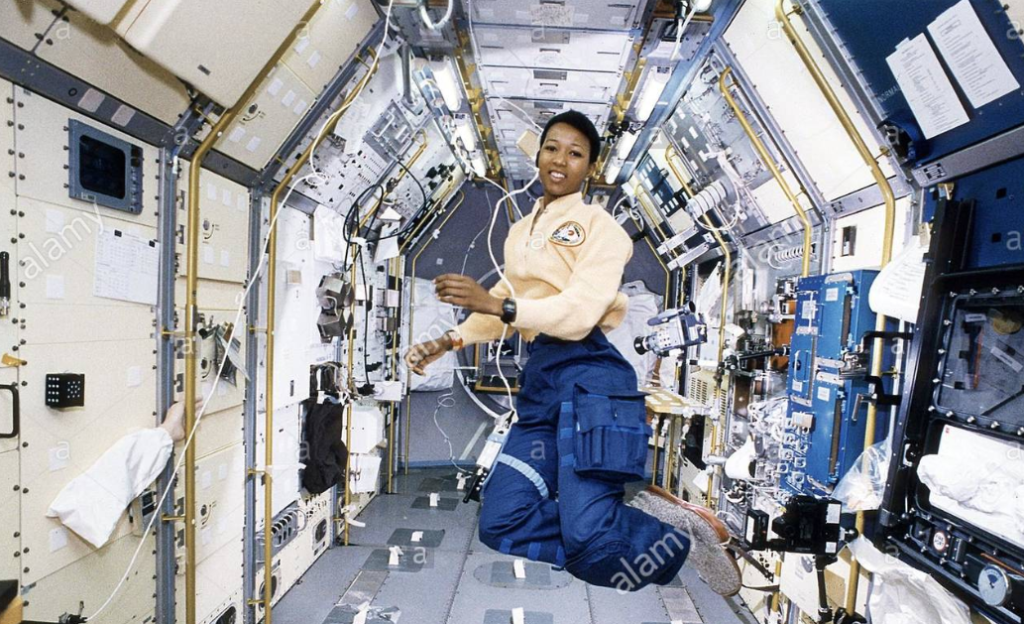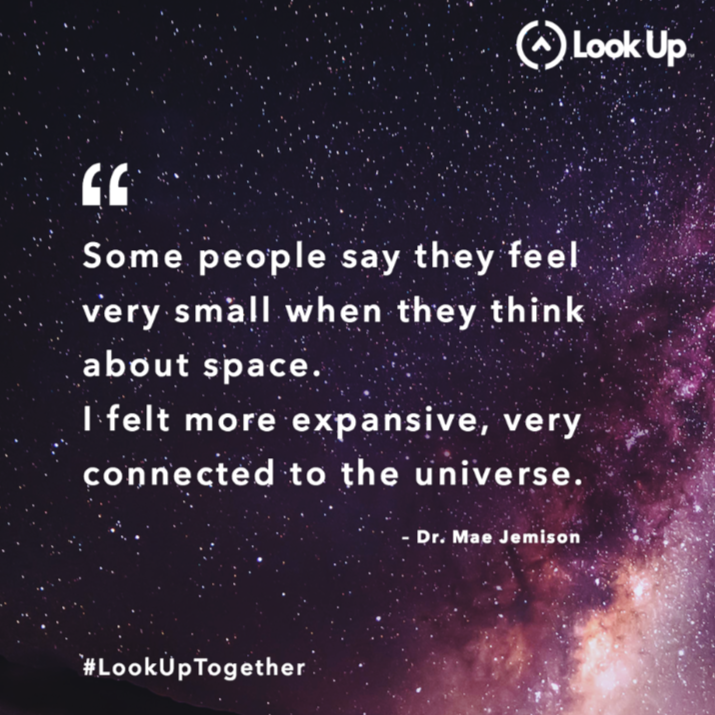
This summer, Dr. Mae Jemison was in the news and on the speaking circuit to talk about her experience as a NASA astronaut, her Look Up Apollo 11 Skyfie challenge covered by Space.com, and her memories as she watched the first humans take steps on the moon. (She prefers to say “humans” or “people” instead of first man on the moon). One of the most rewarding interviews I helped coordinate was with CNN as part of their Apollo 11 anniversary programming.
“I was this child who looked at the astronauts and said, wait a minute, why are all the astronauts white males? What if aliens saw actually saw them and say, are these the only kinds of people on earth?”
Dancing prepared Jemison for space
The first woman of color to travel to space on the Endeavor in 1992, Jemison boasts a long career includes chemical engineer, physician, entrepreneur, educator, STEM advocate and public speaker. A polymath, she once trained as a dancer and considered it as a career.
“One of the best questions that was ever asked of me was by a 12-year old girl. She asked, how did being a dancer help you be an astronaut? Because dancers have to be very disciplined. You have to practice all the time. You have to constantly rehearse and pay attention to people around you. You have to memorize complicated structures and scenarios. You have to be pretty thick-skinned as well, because you have to be able to take criticism and apply it. All those things are valuable.”
Space exploration for everyone
As a child in Chicago in the 1960s, Jemison shared her enthusiasm and excitement about the Apollo space program with everyone she met, but noticed some people did not feel as connected as she did. “You often find people sometimes thinking space has nothing to do with them, because they never saw themselves there.” She never imagined she would grow up to become the first African American woman in space.
Through her work with National Geographic, the Academy of Sciences, and her initiatives including 100 Year Starship and the Look Up project, Jemison emphasizes getting more people a seat at the table to think about space and, with that, the earth we all share. And share, we must: the next generation of space exploration means we will need rocket scientists and physicists, but we also need financial experts, arts and culture experts, writers, clothing and textile designers– the full spectrum of people, cultures and capabilities.
Adds Jemison, “so frequently, people think of the arts and sciences as separate, as not connected. Both of them are required for creativity. Both of them are required to move forward.”
